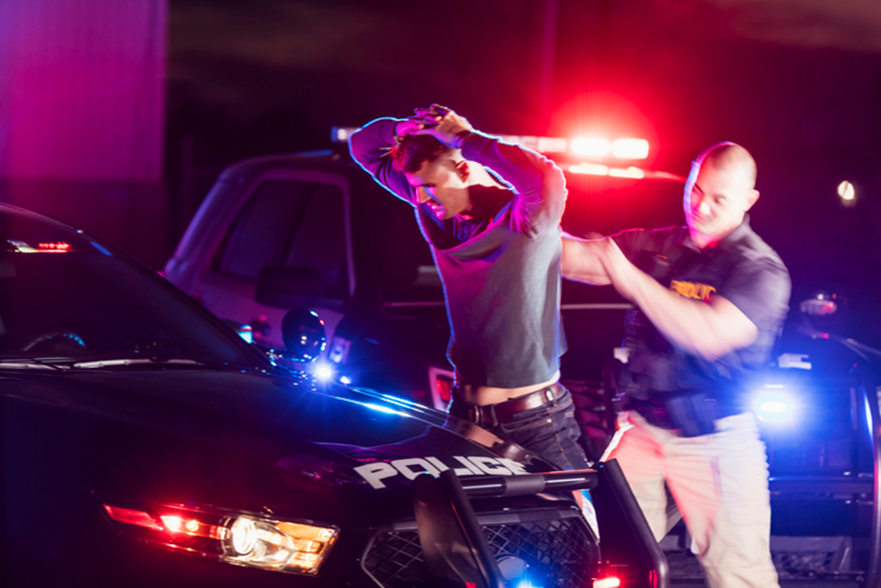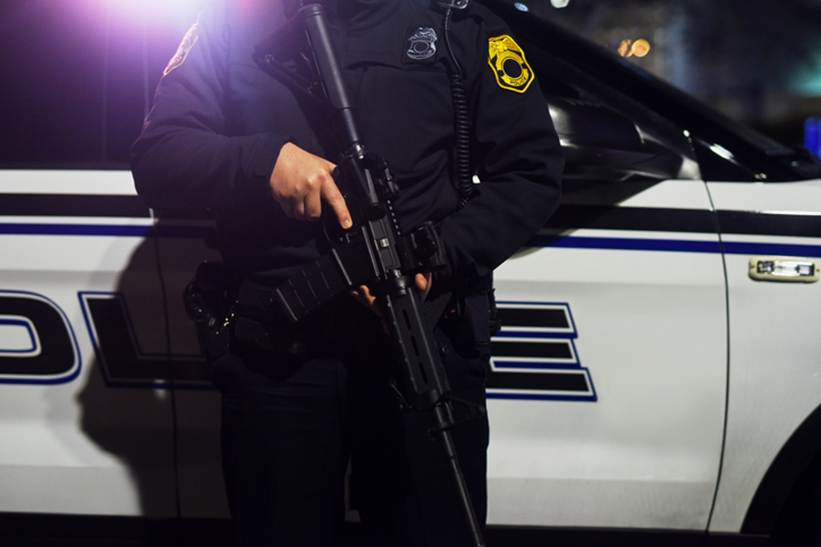
New York Excessive Force Attorneys
When the People Meant to Protect You Go Too Far
Being hurt by someone you trusted to protect you changes everything. When police or law enforcement use more force than necessary, it doesn’t just cause bruises or broken bones. It breaks trust. It leaves behind trauma that lives in your body and mind long after the physical wounds heal.
You might still feel confused or afraid, even weeks or months later. Maybe you're replaying every second, wondering if you did something wrong. You didn’t. This wasn’t your fault. And yes, what happened to you was wrong under the law. Excessive force isn’t just unethical, it’s illegal.
You deserve answers, and you deserve support. Our team at Horn Wright, LLP, is here to help you understand what your rights are and how to hold those in power accountable. Whether it happened on a city street, in a jail cell, or during a mental health crisis, we can help you take the next step.
Send Us An Email | Call Our Office
What Excessive Force Legally Means in New York
Excessive force is any physical action taken by a law enforcement officer that goes beyond what is “objectively reasonable” under the circumstances. That legal standard comes from the Fourth Amendment to the U.S. Constitution and is reinforced by New York Penal Law §35.30. Officers can use force, yes, but only what’s necessary to control the situation, not punish or escalate it.
Common examples of excessive force include:
- Punching, kicking, or beating someone already restrained
- Using Tasers or stun guns on people who are unarmed
- Chokeholds or neck restraints, especially when banned by department policy
- Holding someone down in a way that causes positional asphyxia or injury
The moment the situation is under control, or if there was never a real threat to begin with, continued force becomes unlawful.
How to Tell if What Happened to You Was Excessive Force
When you’re the victim, it’s hard to know what counts as excessive and what doesn’t. The moment may have been chaotic. You may have felt stunned or even blamed yourself. But ask these questions:
- Were you already handcuffed or pinned down?
- Was the situation calm enough that force wasn’t needed?
- Did the officer keep using force even after things were under control?
If you were hurt, physically or emotionally, by force that clearly didn’t match the situation, that’s a sign it may have gone too far. Even if you weren’t left with visible injuries, the emotional damage still counts. Panic attacks, nightmares, and fear of going outside again are signs of trauma courts take seriously.

What Counts as a Strong Excessive Force Case
Strong cases aren’t just about what happened, they’re about what you can prove. The more evidence you have, the harder it is for officers or agencies to deny wrongdoing.
Critical pieces of evidence include:
- Bodycam footage or bystander video
- Surveillance footage from nearby businesses
- Medical records showing your injuries
- Therapist or psychologist reports
- Police reports that contradict what really happened
- Witnesses who saw the incident unfold
Even one well-placed video can shift the entire case in your favor. And if the official story doesn’t line up with what’s on camera? That’s powerful.
Examples of Where Excessive Force Happens
Excessive force can happen almost anywhere law enforcement has authority. But some environments are more likely to lead to these abuses:
- Traffic stops that escalate without warning
- Street-level encounters where people are questioned or frisked
- Arrests and bookings in precincts or jails
- Protests and large public gatherings where crowd control turns violent
- Mental health or wellness checks that spiral into physical confrontations
- Interactions involving youth in schools or on the street
In every one of these scenarios, there are legal limits to what officers can do — and we’ve seen those limits crossed too many times.

Excessive Force During Mental Health Crises
When someone is in crisis, they don’t need violence, they need care. But law enforcement doesn’t always respond with the training or compassion needed. In New York, we've seen far too many cases where people experiencing mental health emergencies are met with Tasers, restraints, or even fatal force.
The NYPD has been criticized for not meeting DOJ standards on crisis response. And while some departments have adopted Crisis Intervention Training, gaps remain. When someone is confused, scared, or unable to comply quickly, it shouldn’t cost them their life.
Federal protections under the Americans with Disabilities Act and constitutional law recognize that people with mental illnesses have a right to accommodations, not aggression.
Excessive Force Against Seniors and Vulnerable Adults
Older adults face unique dangers when excessive force is used. Their bodies can’t withstand the same level of physical stress, and what might be “routine” to an officer can result in devastating harm to a senior citizen.
We’ve seen cases where confusion, slow movements, or hearing loss were mistaken as noncompliance. Officers have yanked arms, used handcuffs on fragile wrists, or shoved elderly individuals during confrontations that never should have happened.
New York and federal laws provide protections for aging and disabled individuals. No one (especially our seniors) should fear that a routine interaction with police could leave them hospitalized or worse.
When Police Brutality Happens in Jail or Detention
Once someone is behind bars, there’s little oversight, and some officers take advantage of that power vacuum. Excessive force in jails and detention centers often looks like group beatings, abusive restraint practices, or even denying medical care after an injury.
The Eighth Amendment protects against cruel and unusual punishment, and the Fourteenth Amendment applies to pretrial detainees. Both serve as legal foundations for excessive force claims in custody. Even if you were awaiting trial or serving time, your rights didn’t disappear.
If you or a loved one were harmed in custody, that harm matters. And medical neglect that follows the assault only adds another layer of injury.
How Department Policy Failures Lead to Excessive Force
Excessive force often isn’t about one rogue officer. It’s about a system that allows abuse to continue. When police departments don’t train their officers properly, don’t discipline repeat offenders, or don’t report force incidents honestly, they create an environment where brutality thrives.
This is where Monell claims come in. Under federal law, victims can sue municipalities when policies (or lack of them) contribute to the abuse. Whether it’s a broken use-of-force training program or a supervisor ignoring misconduct warnings, the city can be held accountable.
Policy failures may not throw the punch, but they let it happen.
Excessive Force at Protests and Public Events
Public demonstrations are protected under the First Amendment, but many New Yorkers have learned the hard way that this protection isn’t always respected. We’ve seen peaceful protesters met with kettling tactics, pepper spray, rubber bullets, and mass arrests — even when there was no threat.
During racial justice protests and other public events, NYPD’s crowd control strategies have drawn national scrutiny. Many of these cases involve video evidence captured by bystanders. That footage often reveals a different story than what ends up in the official reports.
You have the right to speak out without being brutalized for it.

Police Dog Attacks and K9 Unit Misuse
Police dogs are supposed to be used for tracking, searching, or apprehending dangerous suspects. But too often, they’re deployed in ways that cause extreme injury, especially when a person poses no immediate threat.
Deep puncture wounds, infections, and lasting PTSD are all common in dog attack cases. Courts have ruled that when a police dog is used unnecessarily or for too long, it may constitute excessive force.
These cases need detailed medical records and sometimes expert opinions. But the law is clear: K9 units must be used responsibly, and officers are accountable for what those dogs do.
What the Law Says About Qualified Immunity
Qualified immunity is one of the biggest legal hurdles in excessive force cases. It shields government officials from liability unless they violated “clearly established” rights. That means even if force was used, your case must show that a reasonable officer should have known it was wrong.
But qualified immunity isn’t a dead end. Courts are increasingly pushing back when evidence is strong and precedent exists. Legal strategy here matters deeply. Showing a pattern, citing past rulings, and highlighting contradictions in testimony can crack through that barrier.
Excessive Force During Search and Seizure Operations
Search warrants don’t give police unlimited power. During raids or no-knock entries, officers must still follow the Constitution. When they use unnecessary force, e.g., break down doors, point guns at children, or physically assault people during a search, those actions can violate the Fourth Amendment.
These operations often leave families traumatized. It’s not just about physical harm. It’s about the fear that lives on in your home. If you were assaulted or your loved ones terrorized during a search, you may have grounds for a claim under Section 1983.
Routine Encounters That Turn Violent
You don’t have to be suspected of a crime for an officer to use excessive force. Many cases begin with minor interactions, e.g., a traffic stop, a sidewalk chat, or a check-in that turns confrontational. In those moments, if an officer escalates without justification, the law may be on your side.
These types of cases often involve racial profiling, where assumptions about someone’s appearance or background lead to unnecessary violence. The key is showing that the force used didn’t match the situation.
What Permanent Injuries from Excessive Force Look Like
Excessive force can cause lasting harm, not just in the moment, but for years. Victims often suffer from:
- Brain injuries
- Nerve damage
- Fractures or joint injuries
- Permanent disfigurement
- Long-term anxiety or PTSD
Treatment can include surgeries, ongoing physical therapy, or mental health care. Courts consider both current and future medical needs when awarding damages. The more clearly you can document the impact on your daily life, the stronger your claim becomes.
How to Build a Powerful Case for Excessive Force
Evidence is everything in these cases. If you’ve been harmed, gather what you can right away:
- Photos of your injuries
- Medical records and discharge notes
- Witness names and contact information
- Any video (from phones, bodycams, or businesses)
- Police complaints or incident reports
Attorneys also dig deeper, into training manuals, internal affairs logs, and past complaints against the officer involved. The more pressure they’re under to explain their actions, the better your chances in court.
What You Can Recover If You Win
Winning a case doesn’t erase the pain, but it can give you financial support and public accountability. Damages may include:
- Medical expenses (past and future)
- Lost income and work opportunities
- Pain and suffering
- Emotional distress
- Punitive damages for egregious conduct
- Injunctions that force departments to change their policies
Every case is unique. Your recovery should reflect everything you’ve lost, and everything the system failed to protect.
Where to File: Federal vs. State Court in Excessive Force Cases
You can sue in both federal and New York state court, but choosing where and how is strategic. Federal cases often fall under Section 1983, which covers civil rights violations. State claims, on the other hand, may focus more on assault, battery, or negligence.
If your claim involves a government employee or agency, you’ll usually need to file a Notice of Claim within 90 days. Missing this step can derail your case. Attorneys often file both federal and state claims together to maximize recovery.
Horn Wright, LLP, Helps Victims of Excessive Force in New York
Horn Wright, LLP, fights for victims of excessive force across New York, and in nearby communities in Vermont, New Hampshire, and Maine. Our civil rights team brings extensive courtroom experience and deep compassion to every case. We understand what it means to stand up to institutions that abuse their power, and we don’t back down.
From peaceful protesters to people harmed during wellness checks or traffic stops, we fight to expose the truth and recover what our clients deserve. If you’re ready to speak up, we’re ready to help.
Contact our offices for a FREE consultation.

What Sets Us Apart From The Rest?
Horn Wright, LLP is here to help you get the results you need with a team you can trust.
-
Client-Focused ApproachWe’re a client-centered, results-oriented firm. When you work with us, you can have confidence we’ll put your best interests at the forefront of your case – it’s that simple.
-
Creative & Innovative Solutions
No two cases are the same, and neither are their solutions. Our attorneys provide creative points of view to yield exemplary results.
-
Experienced Attorneys
We have a team of trusted and respected attorneys to ensure your case is matched with the best attorney possible.
-
Driven By Justice
The core of our legal practice is our commitment to obtaining justice for those who have been wronged and need a powerful voice.

